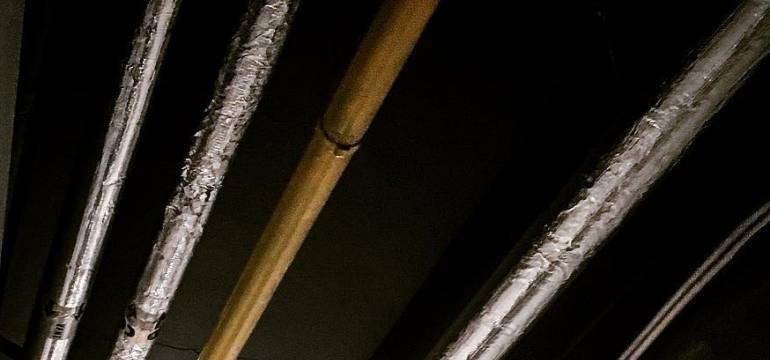Plumbers are often throwing around technical terms, but they don’t mean much to the average homeowner. It can be a challenge to keep up with your plumber when they are trying to explain home issues to you. Understanding what a pipe chase is can be the first step to understanding many common problems that crop up with household or commercial plumbing.
A pipe chase is sometimes also referred to as a plumbing wall. In other words, it is any type of wall that has plumbing piping inside. You may also hear it referred to as a wet wall when in the residential setting or a wet column in the commercial setting. The wall where your plumbing is installed can play a major role in how your plumbing performs throughout the year, so it is important to know where the pipe chases are in your home.
For example, many homeowners in colder regions encounter pipes that freeze during the winter if they don’t let their faucets flow at night. This is because their pipe chase is in an exterior wall that is subject to the snow, ice, sleet, and other elements. This is a problem that can’t be resolved without changing the location of all the plumbing.
Tips for Installing Pipe Chase Plumbing

Some people feel that they have the technical know-how to install their own pipe chase plumbing, perhaps as a bathroom chase wall. While it is often advised to leave this to the professionals, there are a few tips you should know about installing this type of plumbing in your walls.
The first thing you need to know is that all cut-outs need to be either vertical or horizontal, starting or finishing on the wall. While you might be tempted to create a step-like effect with the plumbing, you should avoid this at all costs. One ninety-degree angle is better than two or more angles created inside of the wall.
You also should avoid cutting your chases at an angle. It is far better to keep everything neat and clean with straight pieces as much as possible.
Professionals who do this type of work all the time likely have a specialized tool at their disposal that can easily cut through masonry without much physical labor. While you may be able to find one of these for rent or purchase, it could be cost prohibitive.
However, you could find one with dust collection that could make clean up a breeze. You might find that it is worth the money. Fortunately, there are other options for you if you do not want to spend this much money on your pipe chasing.
The simplest solution is to mark the two sides of the chase on the wall and drill into the waste with a very powerful drill. Drill as many holes as possible up to the required depth to fit the pipes.
Once this is done, you can use a hammer and chisel to remove the rest of the waste and clean up around the edges. Obviously, this will be more time-consuming and laborious, but it can be an equally effective way to get the job done. Wear a dust mask and goggles to protect yourself during this messy process.
Remember that you need to take precautions before you start cutting into a wall. Check the wall to ensure that there are no other cables or pipes already chased into it that you did not know about.
Finish Out the Chase
Many people who are installing pipe chase are doing so with copper pipework. This type of piping is typically very rigid and can stand all on its own inside the new channel. You may need to secure it with a few nails on each side, but it should otherwise be okay. Once this is done, it is time to fill the chase back in.
Gently wet the side and back of the chase with water. Apply a coat of PVA adhesive to the side and back of the chase, as well as to the pipe. This will help to hold everything together as you use a coat of plaster or patching plaster to fill in the rest of the chase. It may require layering if the chase is particularly deep.
Keep the filler just off the surface of the wall and fill in the front with a skimming plaster to create a pipe chase door. From here, you can finish the wall any way you would like.
Technical Help
Installing pipe chase can be an incredibly technical and rigorous job that might be best left to the professionals. They have the tools and experience necessary to work through these issues with no problems at all. If you have any questions about the process, it is best to talk with your plumber before you get started!
- How to Cut Lexan - September 25, 2020
- Mineral Spirits vs. Mineral Oil - September 25, 2020
- Shellac vs. Polyurethane - September 24, 2020

mt
Thursday 17th of September 2020
What do you mean by "waste"? Is this about drilling into a concrete wall rather than stud/sheetrock wall?